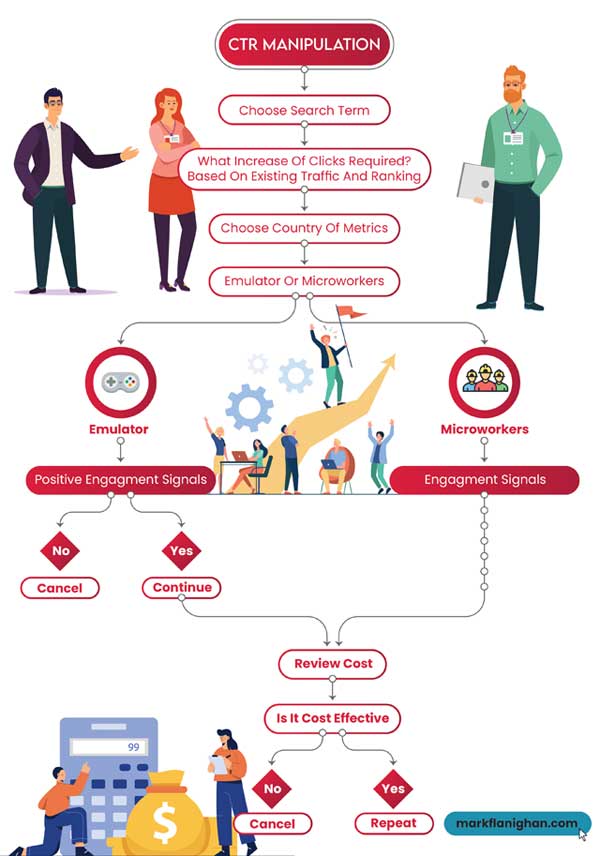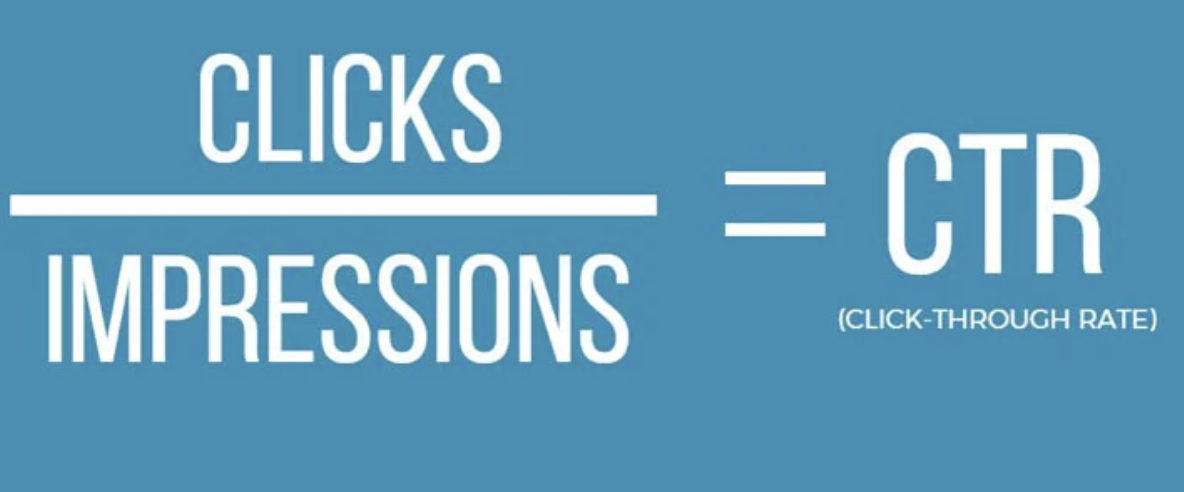Unlock Success: Discover Our Specialist CTR Manipulation Service Today
Unlock Success: Discover Our Specialist CTR Manipulation Service Today
Blog Article
The Art and Science of CTR Control Explained
The manipulation of Click-Through Rate (CTR) is a nuanced discipline that weds mental insights with analytical roughness, important for driving customer engagement in a competitive electronic landscape. As we explore this complex equilibrium, it ends up being obvious that the ramifications of CTR adjustment prolong much beyond mere numbers, triggering a more detailed examination of its broader effect.
Understanding Click-Through Rate
Click-through price (CTR) is a vital metric for reviewing the performance of digital advertising campaigns. It measures the percent of customers that click a specific link or promotion contrasted to the overall number of individuals who view it. Understanding CTR is necessary for marketing experts aiming to optimize their methods and improve individual engagement. A higher CTR shows that the web content resonates with the target audience, driving website traffic and prospective conversions.
CTR is computed using the formula: (Overall Clicks/ Total Impacts) x 100. This uncomplicated calculation allows marketers to assess the efficiency of various digital assets, such as email projects, social media sites blog posts, or pay-per-click ads - CTR Manipulation Service. Monitoring CTR aids determine fads, making it possible for data-driven choices to improve material and targeting approaches
It is very important to keep in mind that while a high CTR is preferable, it needs to not be the sole focus. A comprehensive evaluation should also take into consideration various other metrics, such as conversion price and roi (ROI), to evaluate total campaign success. By examining and comprehending CTR, marketing experts can successfully enhance their electronic advertising and marketing efforts, ultimately resulting in enhanced business outcomes.
Mental Triggers for Engagement
To effectively drive individual interaction, marketing experts have to take advantage of various psychological triggers that influence decision-making and actions. Understanding these triggers can boost the performance of advertising methods and enhance click-through rates (CTR)
 When individuals think a deal is uncommon or time-sensitive, they are more likely to act quickly to avoid missing out. Highlighting reviews, individual reviews, or showcasing preferred products can produce a sense of trust fund and encourage users to engage.
When individuals think a deal is uncommon or time-sensitive, they are more likely to act quickly to avoid missing out. Highlighting reviews, individual reviews, or showcasing preferred products can produce a sense of trust fund and encourage users to engage.One more important factor is making use of psychological appeals. Content that stimulates solid feelings, whether curiosity, happiness, or urgency, can force customers to click. Additionally, the concept of reciprocity, where individuals feel bound to return supports, can be reliable; offering something useful absolutely free, such as an informative resource, can tempt users to involve further.
Techniques for Efficient CTR Manipulation
Employing targeted methods for efficient CTR control involves a critical mix of design aspects, messaging, and target market understanding. One basic method is the usage of engaging headings that evoke interest or urgency. Headlines must be clear, succinct, and lined up with the audience's rate of interests to capture focus promptly.
 Additionally, utilizing top quality visuals can considerably improve CTR. Pictures should be pertinent and appealing, as they can develop an emotional link, prompting individuals to click through. Integrating contrasting shades for call-to-action switches can additionally attract focus and increase click rates.
Additionally, utilizing top quality visuals can considerably improve CTR. Pictures should be pertinent and appealing, as they can develop an emotional link, prompting individuals to click through. Integrating contrasting shades for call-to-action switches can additionally attract focus and increase click rates.One more reliable strategy is A/B testing various components of your content, such as duplicate variants and design designs - CTR Manipulation Service. This repetitive process allows marketing professionals to recognize which components reverberate most with their Resources target market
Moreover, personalization plays a critical function; customizing material based on user habits and choices can cause higher engagement. Crafting messages that deal with certain discomfort factors or needs enhances significance and urges clicks.
Last but not least, making sure that landing web pages are enhanced for mobile phones is important, as a considerable portion of individuals surf on smart devices. These techniques, when performed thoughtfully, can check bring about significant enhancements in CTR and overall project performance.
Studying Data for Better Outcomes
Exactly how can information evaluation transform your CTR manipulation strategies? The application of durable data analysis techniques can significantly improve the efficiency of your click-through rate (CTR) adjustment efforts.
Furthermore, leveraging A/B screening results gives insights right into which variants of your web content return greater CTRs. By continually repeating on these findings, you can refine your technique, ensuring that each item of material is tactically crafted to catch focus. Additionally, utilizing analytical tools to keep track of time invested in pages and bounce rates can aid you recognize the aspects that add to individual involvement.
In addition, segmenting your information based upon traffic sources enables you to identify which networks are most effective in driving clicks. This insight can route your marketing initiatives toward high-performing platforms. Inevitably, information evaluation is not simply a supplemental device; it is a crucial element that can drive impactful CTR methods, inevitably leading to enhanced engagement and conversion rates.
Ethical Considerations in CTR Strategies
Browsing the intricacies of CTR adjustment calls for a mindful assessment of moral factors to consider published here that underpin effective advertising and marketing methods. As services aim to enhance click-through prices, they need to stabilize aggressive methods with the stability of their messaging. Deceptive customers via deceitful techniques, such as clickbait or false advertising, not only deteriorates customer trust but can likewise bring about reputational damages and lawful consequences.
Fairly audio CTR approaches prioritize transparency and accuracy. Marketers must make sure that the material provided aligns with user expectations and gives authentic value.
As marketing professionals evaluate customer behavior to enhance CTR, they have to adhere to guidelines and regard customer legal rights relating to information usage. By focusing on honest requirements in CTR manipulation, businesses can cultivate a sustainable marketing atmosphere that benefits both the company and its target market. LinkDaddy CTR Manipulation.
Final Thought
To conclude, the art and scientific research of Click-Through Price (CTR) adjustment include a complex method, incorporating psychological triggers, strategic techniques, and robust information analysis. While enhancing customer engagement stays a primary purpose, moral factors to consider need to direct these methods to make sure openness and foster trust fund. Balancing reliable CTR adjustment with adherence to privacy guidelines is necessary for sustainable engagement, ultimately lining up advertising exercise with individual assumptions and promoting a favorable electronic setting.
The control of Click-Through Price (CTR) is a nuanced self-control that weds psychological understandings with analytical rigor, essential for driving individual involvement in an affordable digital landscape. Understanding CTR is vital for marketing experts intending to enhance their approaches and improve customer involvement. The application of durable information analysis methods can dramatically boost the performance of your click-through rate (CTR) control initiatives. As marketing professionals analyze user habits to optimize CTR, they must stick to regulations and regard consumer rights concerning information usage. Balancing efficient CTR adjustment with adherence to personal privacy guidelines is essential for lasting involvement, eventually lining up advertising practices with customer assumptions and promoting a favorable digital environment.
Report this page